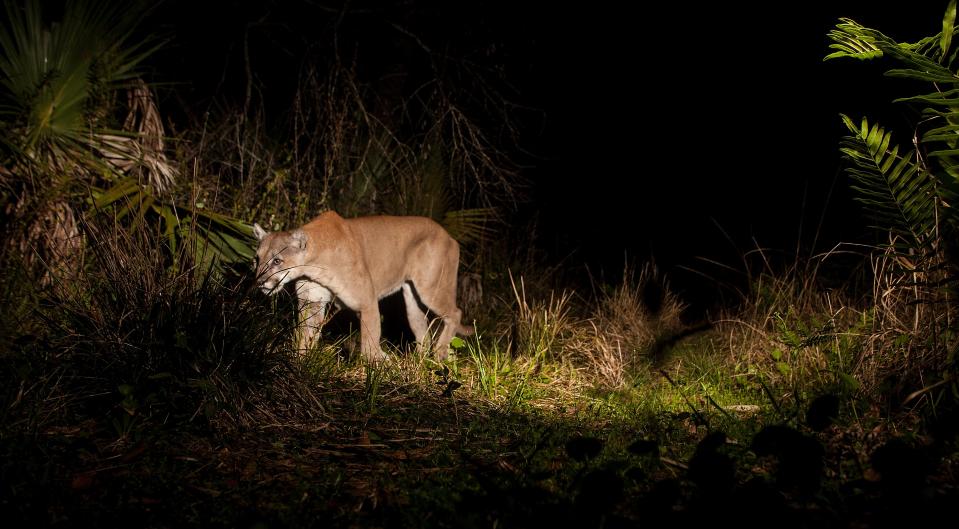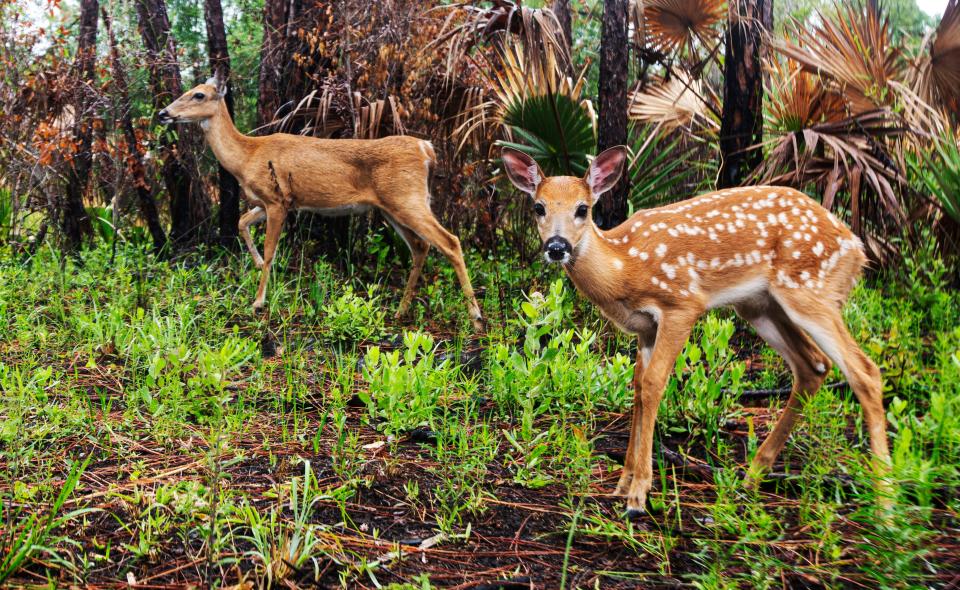FWS: One development in east Lee County could result in up to 23 panther deaths per year
Critics say state and federal government agencies are allowing a development to proceed that could kill up to 10% or more of the Florida panther population per year.
Called Kingston, the 6,600-acre development lies to the west of the Corkscrew Regional Ecosystem Watershed, or CREW, a 60,000-acre preserve that spans the eastern border of Lee and Collier counties.
A permit needed for the development is being authorized by the U.S. Fish and Wildlife Service, or FWS, and the Florida Fish and Wildlife Conservation Commision, or FWC.
"We have a lot of questions about the amount of take being authorized and whether or not this permit and development result in jeopardy ― that means extinction ― for the Florida panther," said Julianne Thomas, senior environmental planning specialist for the Conservancy of Southwest Florida. "If the population contracts by 14 or 15 panthers per year, it won’t take very long before there aren’t enough panthers for survival or recovery."

CREW lands, panther advocates say, are key to growing the population as the cats can move through those lands and go north, and perhaps even across the Caloosahatchee River.
Moving cats to the north of areas like CREW is one of the stated priorities of the panther recovery plan, which falls under the Endangered Species Act.
FWS is the federal agency responsible for enforcing the Endangered Species Act, and the agency says the development could result in the death of a dozen or more panthers per year.
“The U.S. Fish and Wildlife Service’s effects analysis used to review the Kingston development project in Lee County indicates a range of between four and 23 (99% confidence interval) panthers could be taken per year," said Robert Carey, division director for Division of Environmental Review, Florida Ecological Services, FWS, in an email to The News-Press. "However, there is a large amount of uncertainty associated with this estimate."
Carey said reviewing panther impacts in light of the Kingston development is difficult.
"The relationship between traffic volume and the likelihood of a panther strike is complex and must consider variables such as habitat configuration, road design, driver behavior, and panther population size," Carey said.
The population size is in doubt at this point as panther roadkills have been about half of what they were just a few years ago.

Biologists have long said a higher number of roadkills indicates a larger overall population as there are more panthers alive to be hit and killed by cars.
A disease that first sprang up in 2017 in panthers and bobcats is thought to be taking a toll over the overall population.
Feline leukomyelopathy, of FLM, is a neurological disorder which causes the cats to lose control of their rear legs and pelvis, and many cats eventually starve or die due to causes related to the disease.
How many panthers are left in Florida?
With the FWC estimate of 120 to 230 big cats living south of Lake Okeechobee, how many panthers are left in Florida in the aftermath of the FLM disease?
Simple math shows that the Kingston development alone could be responsible for causing 10% or more of the population to be killed on the roads each year, if the maximum number of the FWS review (23) is compared to the top end of the panther population estimate of 230.
Panther advocates like Thomas say that type of loss is just not sustainable for an endangered population that may already be on the decline.
More: Florida's panther appears to be in decline with few roadkills this year
Thomas said FWS estimates show that about eight panther kittens join the adult population each year.
"In order to not negatively impact the survival ― not recovery, just survival ― of the Florida panther, this means that the FWS and FWC shouldn’t be authorizing more than eight panther takes," she said. "And here they are, authorizing nearly triple that for just one project."
Developer talks panther habitat
Cameratta Companies in Estero is spearheading the Kingston development, and company CEO Joe Cameratta said development will set aside nearly half of the total land for panther habitat such as crossing corridors.
"Right now it’s a farm field and old citrus groves, and we’re protecting 3,300 acres," he said. "We’re paying substantial mitigation and following all the rules of the Fish and Wildlife Service and they did a thorough review with the help of the Florida Fish and Wildlife Conservation Commission."
More: Florida posts 'cryptic' public notice for proposed changes to Estero Bay preserve
Cameratta said the company is paying more than $10 million in panther mitigation fees.
"We're doing what's required of us to protect the panther," he said.
A statement from the FWS press office says the agency is working to reduce panther threats.
"The U.S. Fish and Wildlife Service works in close partnership with state, federal, and county agencies on initiatives that advance recovery and reduce threats to the panther population," the statement reads. "These initiatives include the construction of wildlife crossing structures specifically designed for panthers. Efforts to secure and manage the habitat panthers' need for recovery through conservation easements on private lands and through our regulatory role under the Endangered Species Act minimize the impacts of human development."
Connect with this reporter: Chad Gillis on Facebook.
This article originally appeared on Fort Myers News-Press: Florida panther advocates worry development in Lee will impact cats

